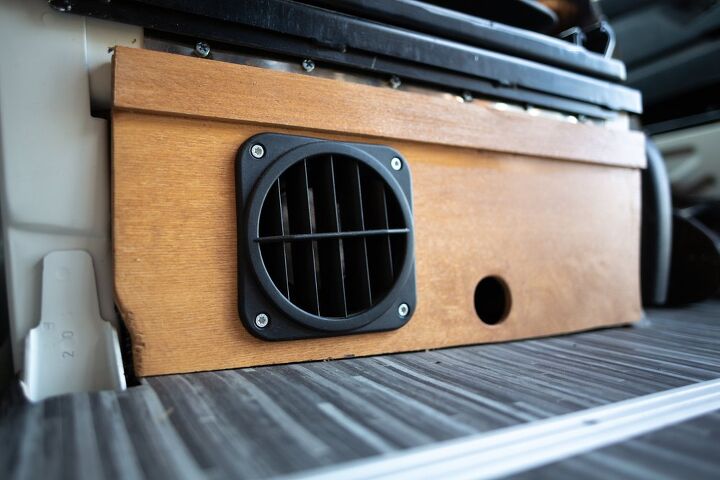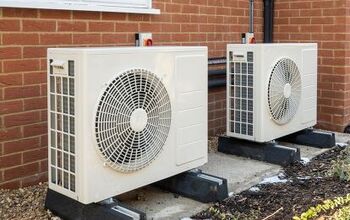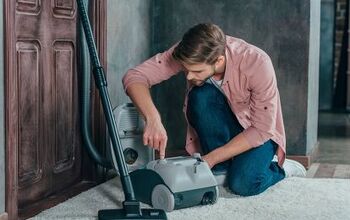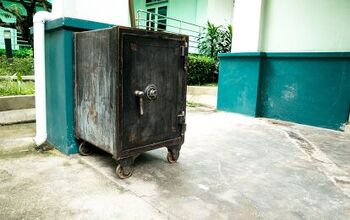What Is Auxiliary Heat? (Find Out Now!)

I’ll be honest. When I first heard the word “auxiliary” to describe heat, all I could think of is the women’s auxiliary club in town. It’s a term that I only recently heard in conversation. Most of us, after all, tend to focus on central heating or space heating. If you’re like me, you probably were wondering what on earth auxiliary heat is.
Auxiliary heat is a secondary source of heat that only kicks in when your main heat source (the heat pump) is unable to deliver adequate heating. You might see its use indicated by a light labeled “AUX” on your heater or furnace during nights that are exceptionally cold. You should be concerned if your auxiliary heat is used too frequently as it can indicate problems with your HVAC system.
Understanding what your “AUX” light indicates can help you gain a better understanding of your HVAC and also potentially stop problems before they become unsolvable. This guide will help you understand what your auxiliary heat does and when you should get worried.
What Does Auxiliary Heat Do?
In order to understand how auxiliary (or “aux”) heat works, you need to know how most heating systems work. Auxiliary heating is something you will usually only find in a heat pump setup, rather than a furnace. With a heat pump, your system pumps in hot air from the outside into your home’s interior.
The thing is, heat pumps already work hard. When the temperature outside starts to fall below freezing, it becomes increasingly difficult to source enough warmth from the air. After all, heat pumps do not make their own heat; they remove it from their surroundings. To get more heat, your pump will turn on its auxiliary heat line.
Auxiliary heat isn’t a separate heater nor is it some kind of separate entity. It’s a secondary heat source that works alongside your main heat pump, doing its best to help provide you with more heat when you need it.
Is Auxiliary Heat The Same As Emergency Heat?
Though the two are often used in similar situations, they are not the same. Emergency heat only gets turned on when all else fails or if your system is under extreme duress. For example, if your regular heater isn’t sucking in heat and your auxiliary went kaput, you probably will see your emergency heater light go on.
Auxiliary heat gets turned on when the primary heater is just not working as well as it should or if it needs a little boost. The best way to describe the difference is that your auxiliary heat is the brake in your car, while the emergency heat acts more like an airbag. If you’re using the brake, you’re trying to prevent deploying the airbag.
How Can You Tell If The Auxiliary Heat Is On?
With most heat pump systems, you’ll be able to tell if the auxiliary heat is on by looking at your thermostat. If the “AUX” light is on, then your auxiliary heat has kicked in. Most auxiliary heat is designed to kick in automatically after a certain temperature drop is sensed. Usually, the temperature margin you need to hit before you see “AUX” lit is 32 degrees Fahrenheit.
On a similar note, you can usually tell if the emergency heat is on through an emergency light. Unlike auxiliary heat, the emergency heat has to be manually switched on in most models. If it has a switch near it, then you can expect it to be the emergency light.
Is It Normal To Have Your Auxiliary Heat On All The Time?
Though your heat system was built to have a little extra help, it wasn’t meant to be the main source of your power. You shouldn’t see your auxiliary heat light on if you’re just doing your regular thing and the weather isn’t cold. In many cases, this indicates that you have low refrigerant or a motor fan problem.
If it’s above 32 degrees and you’re still seeing your auxiliary heat on, you should call an HVAC tech to troubleshoot it. Otherwise, your heating system might be on the course for failure. Or, at the very least, you’ll be dealing with a lot of high heating bills in your near future.
What Happens If Your Auxiliary Heat Is Overused?
If your auxiliary heat is overused, the biggest issue that you’ll probably have a higher heating bill. Auxiliary heaters are not as efficient as the primary heater is, and that means that you’ll end up spending more money on the same level of heat that you already have. This is because aux heat is derived from electric resistance rather than a heat pump.
It’s important to remember that any part of your HVAC equipment will be prone to wear and tear if you use it more frequently than you’re supposed to. Prolonged use of your auxiliary heater might also strain it, causing it to fail sooner rather than later.
When Is It Necessary To Call A Professional?
Any time that you see your auxiliary heat light on at 40 degrees Fahrenheit or higher, you should call a professional to get a diagnostic done. This suggests that your primary heater is failing or that there may be a serious issue with your temperature sensor. To avoid having further problems, check it out before it gets to be a bigger deal.
If you notice your emergency heating on at any point, you probably should be concerned. If it stays on, even when you don’t need any additional heat, call a professional to examine your issue.
How To Treat Your Auxiliary Heat Pump Right
Being able to avoid high heating bills and repair bills requires you to have a little proactive behavior when it comes to keeping your heating system maintained correctly. To make sure your auxiliary heat doesn’t die on you, do the following:
- Only increase your temperature by 1 to 2 degrees at a time during winter. Keep your home running at 67, and feel free to ratchet it up to 69. But, if you want to go to 71 or 73, make sure to wait a moment so that you don’t overwork your heat pump all in one go.
- Get your HVAC system regularly maintained and inspected. Try to shoot for a semi-annual checkup with your HVAC professional, and make sure to clean your heating filters on a regular basis. Dirty filters are the most common culprit when it comes to a poorly-functioning HVAC system, so keeping an eye on them is a good way to make sure you make the most of your time.
- Never turn on your emergency heater unless you actually have a legit emergency on your hands. Your emergency heat switch is there in case your heat pump breaks, or if you are currently in a major blizzard and it’s negative 30 outside. It’s not for days where you want to get your heat up faster.
- Fix any issues that you see with your heater. The sooner that you address heater issues, the less likely it is that your auxiliary heat pump will die.
- Follow the maintenance schedule and tips found in your AC unit’s owner’s manual. No one will have better advice on how to keep up your heat pump than the people who made it. To get the best possible results with your heat pump system, check the manufacturer’s manual or website for better advice.
Related Questions
Why did my auxiliary heat stop working?
Like with many HVAC issues, the biggest culprit that is liked to a sluggish auxiliary heater is a dirty filter. This is because a dirty filter makes it difficult for airflow to occur efficiently, which in turn, can cause the heat that’s been generated to have a difficult time getting to where it’s supposed to be.To ensure that your auxiliary heat works well, keep your filters clean and regularly replaced. If your aux is still behaving poorly, it could be a matter of a bad heating element or a motor burnout.
Is it normal to have your heat pump running constantly?
It all depends on the weather that you’re currently dealing with. If you’re seeing your pump hard at work during the winter, don’t worry. That’s totally normal and most heat pumps will work at a constant rate to ensure that your interior heat stays tolerable. During the summer, however, you should be concerned. The should be no reason for you to need heat to keep up.
How much does it cost to replace or install a heat pump?
If your heat pump recently died on you, then you’re in for a rough time. A typical heat pump installation will cost approximately $5,100, with the low range being $700 and the high range being in excess of $10,000. To get the best rate on installations, make sure to shop around and get multiple quotes from different HVAC crews.
How long does a heat pump last?
There are several factors that affect the longevity of a heat pump, including the area where you live and the use that you get out of it. The majority of heat pumps will last a minimum of 15 years, if not more. To make the most of your heat pump, maintain it well and avoid straining it through high-temperature fluctuations.
When should you consider replacing your heat pump?
A heat pump should be replaced whenever it gets over 15 years in age or if it requires major repairs while being over the age of 10. If your technician says that the heat pump would cost more to repair than replace, you should also consider replacing it instead of trying to fix it.

Ossiana Tepfenhart is an expert writer, focusing on interior design and general home tips. Writing is her life, and it's what she does best. Her interests include art and real estate investments.
More by Ossiana Tepfenhart



























